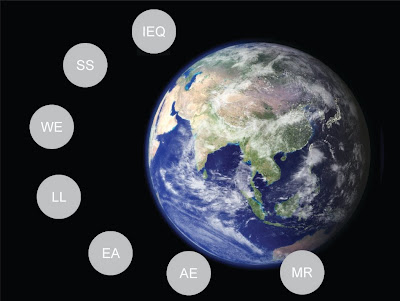It's "media-driven exposure" not only allows local designers to take this theoretical framework and regionalize it (as was done at the Viaduct Daumesnil, France), but more importantly expand the culture making it a palatable strategy for civic and corporate entities throughout the modern world. "Voids" or "constructions" of inner-city neighbourhoods have evolved as a byproduct of the organizational and territorial evolution of the industrial revolution (assembly line process) - a utopic future vision achieved through the maddening pursuit of mechanically driven technological innovation. These spaces that offer what James Corner refers to as "potential action" have, arguably, become targets envisioned as a panacea for an evolving paradigmatic shift in urban planning. These "hot zones" are increasingly considered more capable of delivering an enhanced urban experience in a new cityscape organized around natural and ecological systems. While most projects remain suspended in the conceptual and theoretical world of design competitions, the High Line - Phase 2 of which is currently being constructed in New York City - remains one of the few current examples of this urban theoretical paradigm.
As cities develop new methods and codes of social convention emerge - thereby regulating the relationship between urban stakeholders and the performative patterns of its users - we will see a slow but progressive change in the way that these codes manifest themselves in the built regimes of land-use organization. Like the emergence of hip-hop music, this evolution is being planned and designed for with an open-ended, yet very strategic approach.
Already we have seen the continued and hyper-advertised programming of the High Line since its grand opening. Permanent, temporary, and performance works of art abound. Lectures and educational programming have also seen an increase in attendance due to the flexible use of this public open space. The emergence of such provisional social patterns of use are precisely the more salable elements of such provisional space that appeals to an increasingly urban population. Alliances that are formed during the population of such urban surfaces speak to the anarchic and more identifiable tendencies of such a (re)public.
A layering of environment, living systems, and the man-made engrain a new direction of city planning and organization in the modern human psyche. Seen as the "total spatial and visual entity of human living space" landscape urbanism seeks to reach out and connect with an audience that is discerning, empathic and compassionate, and at the same time susceptible to and heavily influenced by a popularized majority.
As the likes of Eminem and Vanilla Ice provided the ultimate catalyst for the proliferation of hip-hop culture, so too shall the "Friends of the High Line" seek to provide the ultimate catalyst for landscape urbanism. However, it strikes me that the biggest potential for the mass acculturation of landscape urbanism goes "beyond the music". Societal shifts are ready to ensure the corporate acceptance of such "fashion" or "street promotion", igniting the overall mainstream acceptance of the culture.
If the "HIgh Line Shop" is any indication, the consumption of such a landscape urbanist culture is led by corporatized acceptance, and a pursuance of its culture for "market capitalization". Design firms, perhaps even entire cities seeking to stay culturally relevant may now see "landscape urbanism", like hip hop, as the answer to many, if not all of their problems. The effect of infusing landscape urbanism into the brand is self evident.
If Reebok has painted itself into a corner choosing now to be a lifestyle brand rather than a sports brand, you cannot argue with its current success . . . the brand has made a dramatic positioning shift in recent years. With Jay-Z and 50 Cent replacing athletic stars as lead pitchmen, the brand has never been hotter . . . Up and coming brands like Glaceau's Vitamin Water . . . recently began using 50 Cent as a primary pitchman, even giving him his signature line of water, called "Formula 50." Sales from companies using hip-hop culture as a marketing tool aren't driven by New York, Chicago and Los Angeles; they are driven by Middle America becoming fully integrated to the culture. While politically we are a nation split among "red states" and "blue states," for youth, hip hop is the unifying force that corporations are calling on to drive sales.Is there any cause for concern? As the processes and approach to colonization fade to a reversal of such traditions of settlement and city building, do we run the risk of achieving an environment aesthetically different but not dissimilar in function to the once revered homogenistic layout of the Industrial Revolution? As the hip-hop appeal emerged from the gritty environs of the inner city to find an untapped fan base in the middle and upper classes of society, so to may landscape urbanism provide a hybrid urbanism in a more ecologically balanced but popular "natural" ecology. Unfortunately, it may only be then that we find a highly commercialized and replicable form that emphasizes profit over all else - slowly eroding the promise of a more heteropic cityscape. Social justice and equity - arguably the foundations of a purist's urbanity - are not only not addressed, but risk exploitation.
I worry, also, for the future of such noveau well-documented spaces praised only by a hyper-theoretical and over-intellectualized public. Is landscape urbanism simply our most recognizable, albeit theoretical panacea to the post-industrial revolution, destined to remain a preliminary experiment barely off the shelves and in need of further ground-truthing? Will suburbanites find a sudden urge to forgo the pleasures afforded to them, or will they simply be willing to pay a further premium to occasion such urban spectacles. The merchandising of the High Line, arguably, moves its achievements further from its potential for social, civic, and infrastructural change, by simply lowering itself to the lowest common denominator - the almighty gr$$nback.

































